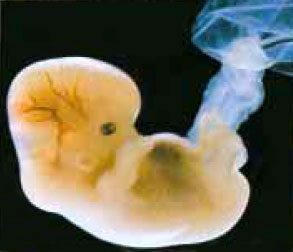Brief History of the Aztecs
Mexico History / / July 04, 2021
The Aztecs in their beginnings were one of many nomadic tribes that roamed the territories of aridoamerica, having an origin in the mythical Aztlán, (from which the name of Aztec comes).
They arrived in the Valley of Mexico at the beginning of the twelfth century, being preceded by other migrations of Nahuatl-speaking peoples, (language spoken by the Aztecs), they settled first in Lake Pázcuaro (present-day Michoacán), and in Coatepec, already within the valley of Mexico. Later they continue to emigrate to the south, reaching Chapultepec, around the year 1272, obtaining fame among the peoples of the place as brave and cruel warriors, regularly entering into conflict with various peoples. After being defeated they were confined in Tizapán, and began to inhabit different points of the Valley of Mexico, which were domains of the lordship of Azcapotzalco, who subdued them and forced them to pay tribute, approximately in the year 1325 they settled on an islet in the lake of Texcoco.
After an alliance had been concluded between the Mexicas (Aztecs) and the lordships of Texcoco and Tlacopan (Tacuba), they freed themselves from the yoke of the Azcapozalcas, and little by little They were dominating the different dominions of the Valley of Mexico, taking preeminence the Mexicas, over their allies of Texcoco and Tacuba, coming to dominate several peoples forming an empire, which included the central part of Mexico and part of Guatemala, with influence in vast regions of the north and south of present-day Mexico and Central America. It should be noted that some lordships that were surrounded by the Aztec domains, managed to maintain their independence from the Mexica until the arrival of the Spanish, these were: Tlaxcala, Tututépc, Mextítlan, and Yopitzingo.
After the landing of Hernán Cortés and his men, Moctezuma was informed of his arrival; and based on the prophecies of the return of the god Quetzalcóatl, which coincided with the dates on which the Europeans arrived, who also coincided with the descriptions of the god Quetzalcóatl, (white complexion, beard, etc.), Moctezuma believed that the prophecies of the return of the god of him, they had complied, and believing that they were emissaries of the god and even that his chief (Hernán Cortés) was the same Quetzalcóatl who returned to claim the kingdom of him. This confusion greatly facilitated the advance of the Spaniards, being received by Moctezuma with honors.
When the Spaniards arrived on the continent and entered the territories of the Aztec empire, already entered into a plan of conquest proper, they were advancing through the territories of the vassal peoples of the Aztecs, and of some of their enemies, being received at times willingly and at others as in Tlascala, first in war and becoming their allies. After having fought the Tlascalans and the Indians having been defeated, the division between them decided to for or against the Spaniards, he leaned toward the alliance to fight the Mexica his long-ago enemies weather. In the same way, several indigenous peoples who were under the yoke of the Aztecs joined the Spanish, increasing their troops.
In this regard, a very important character stands out in the development of the events of this time, the "Malinche", (Malintzin), or as the Spanish called Doña Marina. She was the daughter of a nobleman but she was sold as a slave to a Mayan chieftain when she was a girl, which is why in addition to the Nahuatl learned Mayan, later being an interpreter from Nahua to Mayan with Jerónimo de Agilar, and this from Mayan to Spanish. She later learned Spanish and thus became an interpreter and confidant of courteous. In this regard, it should be mentioned that since Malintzin was the voice through which she spoke courteously, the indigenous people took hatred against her, reaching that hatred in certain sectors of the population, (even in the actuality), denominating him like "malinchista", to anyone who hates the national thing or prefers something foreign to the detriment of the country's own, regardless of the scope of which it is treating.
As the contact between Moctezuma and Hernán Cortés began in a diplomatic way, the Spaniards entered Tenochtitlán with the consent of the "emperor." Mexica, entering with them a large number of their allies Tlaxcalans, Totonacas and other tribes, which annoyed the Aztec people when they saw their hated enemies within their city, in addition to being invited together with the Spaniards they had to provide them with food and various waxes just like the Spanish people. Preventing an uprising on the part of Moctezuma, Cortés took Moctezuma prisoner, living prisoner together with his captors, the Spaniards, within his own palace, In addition to this, the excesses and excesses committed by the Spaniards, exacerbated the spirits of the population, especially after the departure of Hernán Cortés to fight Narváez. The garrison that he left in Tenochtitlan, (made up of Spaniards and a large number of indigenous allies), committed a massacre of several nobles during a celebration. religious in the main temple, causing that when Hernán Cortés arrived in the city, it was already in a state of war against foreigners (Europeans and their allies natives). Cortés tried to appease the crowd using Moctezuma as an intermediary but the population She was still fired up and they threw stones and arrows towards where Moctezuma and his captors were Spanish people. That day Moctezuma died, it is not known for sure, if he died from a stone or if he was strangled by the Spanish, as the two most popular versions of the event affirm.
As a result of these events, the Spanish and their indigenous allies, (mostly Tlaxcalans and Totonacs), fled stealthily on the night of 30 December. June 1520, but they are discovered and pursued by the Mexican warriors, several Spaniards dying in combat, or drowned by the weight of gold and various treasures that they carried with them between their clothes, with the same fate thousands of their indigenous allies who also carried part of the loot with them.
After regrouping and recovering forces, Cortés and Maxixcatzin from Tlaxcala reaffirmed the agreed alliance and reunited with other peoples subjected to the Aztecs, an army made up of between two hundred and fifty thousand and three hundred thousand indigenous people, made up mainly of Tlaxcalans and Totonacs, Although there were thousands of warriors from a large part of the peoples subjected to the Aztecs, who allied with the Spanish in order to continue their advance, except the lordships of Texcoco and Tacuba, who remained loyal to the Mexica, until shortly before the defeat of the Aztecs, going over to the side of the Spanish people.
After the death of Moctezuma, Cuitláhuac was elected his successor, starting the war against the invaders, ruling for only 80 days as he died of smallpox. Cuauhtémoc succeeded him as Aztec leader, who initiated the defense and carried it out until its last moments.
This huge army led by the Spaniards, who had technical advantages such as horses, firearms and metal weapons, put the city under siege, making a blockade by land, blocking the bridges that connected the city with the mainland and by water through the ships that Cortés had built, as well as with the canoes of his allies.
It is worth highlighting a fact that facilitated the victory of the Spaniards; the spread of diseases for which the indigenous immune systems were unprepared, such as smallpox, which indigenous people on both sides, but more deadly on the side of the Aztecs, since they were besieged without water or food and in good conditions. unhealthy.
The fight was fierce as the city was taken house by house, leaving only a few thousand hungry at the end. Tenochcas, who after some attempts to escape from the ruins of the city, surrendered for the hunger. The sovereign Cuauhtémoc was taken prisoner when he tried to escape along with his family and some of his warriors in canoes, being captured by one of the brigs that blocked the lake, surrendering he and the city on August 13 from 1521.
After the defeat and fall of Tenochtitlan the survivors dispersed, although it is known that some joined the Spanish in other campaigns, thanks to their warrior skills and knowledge of the country, converting to Christianity, adopting European and Christian names and mingling with Europeans and other tribes indigenous peoples, as well as with Africans brought as slaves by the Spanish, resulting in the miscegenation that formed what would later be called New Spain and now it is Mexico.



